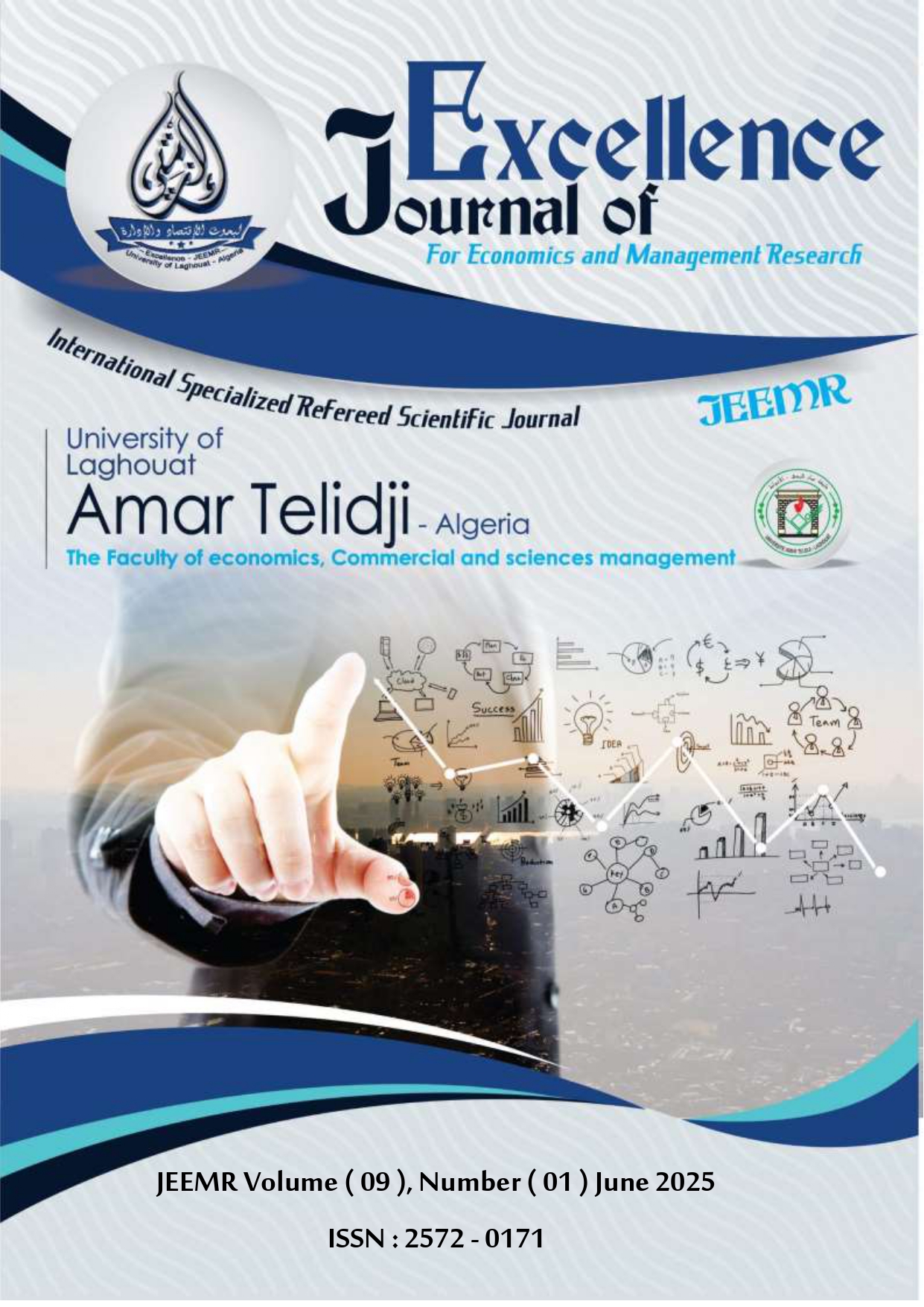The impact of Algerien migrants remittances on economie growth: an ARDL bound test approch
Abstract
This study aims to measure the impact of Algerian migrants' remittances on economic growth during the period from 1980 to 2023, in comparison with foreign direct investment (FDI), exports, and government expenditure. The Autoregressive Distributed Lag (ARDL) model is used to determine the short and long-term relationships between Algeria's GDP, which measures economic growth, and migrant remittances, foreign direct investment (FDI), exports, and government spending (gex).
The results of the study show that, such as government spending, migrant remittances have a negative long- and short-term impact on GDP and, on overall economic growth. Exports and foreign direct investment, on the other hand, show a favorable effect. These findings demonstrate how urgently Algeria must establish a suitable institutional structure and put laws into place that guarantee the best possible use of remittances in order to promote economic expansion.
References
Belmimoun.A, K. A. (2014). the impact of migrants remittances on economic growth empirical study:case of algeria(1970-2010). European Scientific Journal, 10(13), 364-384. doi:10.19044/ESJ.2014.V10N13P%P
boutalbi, b. s. (2022). Athar altḥwylāt al-mālīyah llmhājryyn ʻalá al-numūw al-iqtiṣādī fī al-Jazāʼir, dirāsah qiyāsīyah lil-fatrah 1970-2019. al-numūw al-iqtiṣādī wālmqāwlātyh, 5(3), 64-78.
Chami, f. a. (2003). are immigrant remettances flows a source of capital for development ? IMF working paper.
Devender. (2022). impact of remittances on economic growth: an empirical study of 14 developing countries. international journal of scial science and economic research, 7(10), 3348. doi:10.46609/IJSSER.2022.v07i10.010
Djalab.Z, S. (2023). the impact of international capital flows on the economic growth in algeria during the period 1990-2018. Les Cahiers du Cread, 39(1), 63-86. doi:10.4314/cread.v39i1.3
elbank_eddawli. (2023). Astmrār numūw tḥwylāt al-mughtaribīn fī ʻām 2023 wa-lakin bwtyrh abṭʼ. Récupéré sur https://www.albankaldawli.org/ar/news/press-release/2023/12/18/remittance-flows-grow-2023-slower-pace-migration-development-brief?utm.com
Gaujarati .D, S. (2007). Basic econometrics. new delhi: MC Graw-hill education.
Habib Ouni, H. M. (2019). The Impact of Migrant Remittances on Economic Growth in arabic countries. journal of economics and public finance, 5(2), 188-202. doi:doi:10.22158/jepf.v5n2p188
M. Hashem Pesaran, Y. S. (2001). Bounds Testing Approaches to the Analysis of Level Relationships. Journal of Applied Econometrics, 16, pp 290-292.
Meyar, s. (2017). the impact of remittances on economic growth: an econometric model. economicA, 18(2), 147-155. doi:https://doi.org/10.1016/j.econ.2016.06.001
Ratha, D. (2003). Workers' remittances: an important and stable source of external development finance. THE WORLD BANK .
Rocher, P. (2008). LES TRANSFERTS DE REVENUS DES MIGRANTS: QUEL IMPACT SUR LE DEVELOPPEMENT ECONOMIQUE ET FINANCIER DES PAYES D'AFRIQUE SUBSAHARIENNE? Bulletin, la Banque de France.
tayoub, h. (2022). Ṭywb, Ḥ.,. (2022). Athar altḥwylāt al-mālīyah lil-muhājirīn ʻalá al-numūw al-iqtiṣādī : dirāsah taḥlīlīyah qiyāsīyah li-ʻayyinah min duwal Shamāl Afrīqiyā 2000-2020. al-iqtiṣād wa-al-tanmiyah al-basharīyah, 13(2), 149.
W. A. Broock, J. A. (1996). a test for independence based on the correlation dimension. econometric reviews, 15(3), 203-205.








